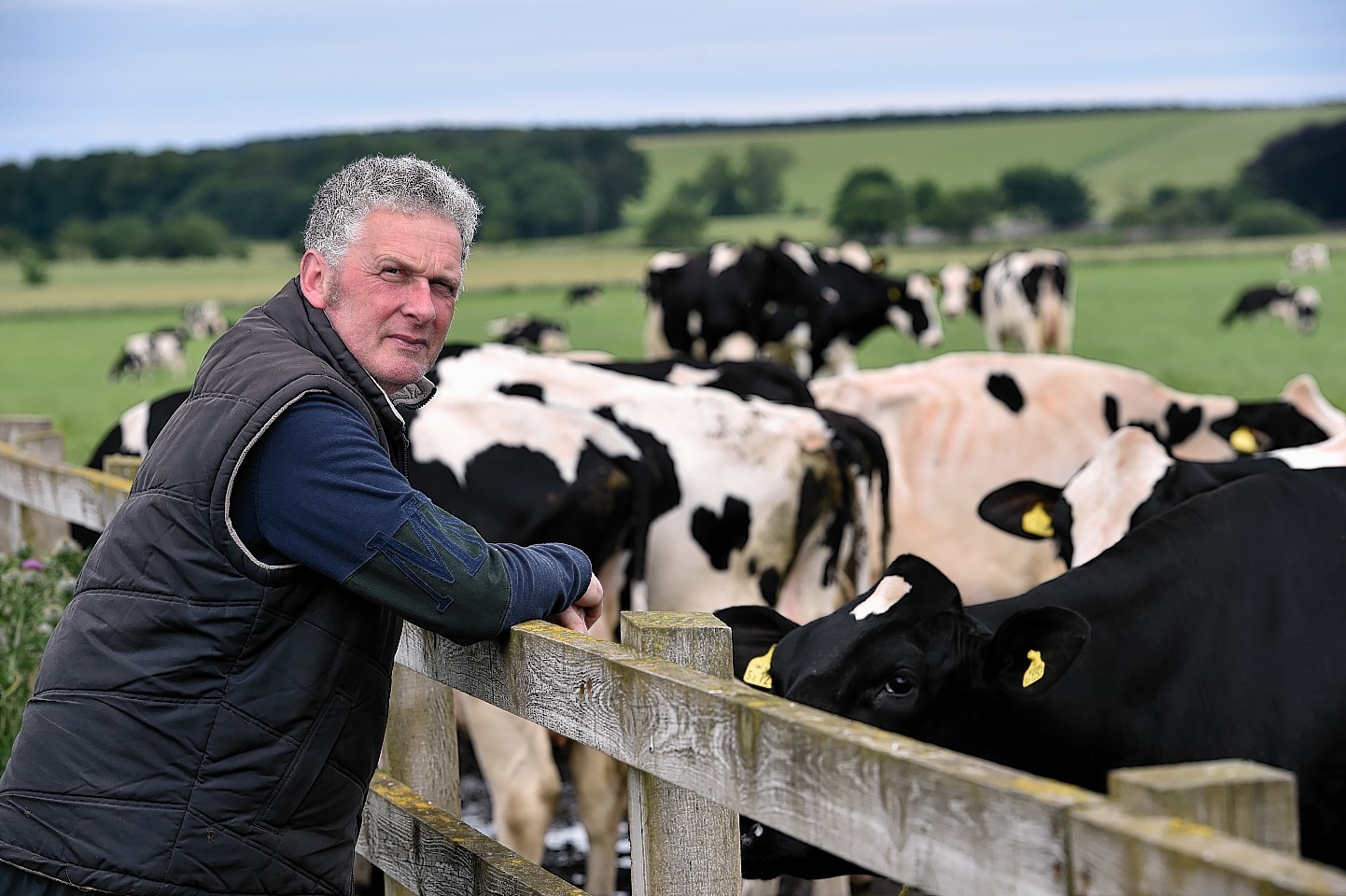North-east dairy farmer John Shand waved goodbye to his beloved black and whites at a specialist sale yesterday.
Mr Shand, who runs 110 pedigree Holstein cows at Chapelford Farm, Clochan, near Buckie, sold the bulk of his herd at Carlisle.
Auctioneers Harrison and Hetherington put 199 beasts under the hammer to a packed ringside of buyers.
Trade topped at 1,620gn for a freshly calved cow in her second lactation giving 50.2kg. She was sired by Mr-Sam and bred from a Very Good dam with over 60 tonne lifetimes.
The entire milking herd – some 105 cows and heifers in-milk – averaged £1,001 and found homes in 17 counties in England, Scotland and Wales.
In-calf heifers (17) met a brisk trade with an overall average of £1,361.90 and a top of 1,480gn for Chapelford Wyman Ada 3.
Sired by Wyman and bred from an Excellente Lucente dam, this one sold to John Forbes and Partners at Montrose.
Recently served heifers (18) sold to an average of £924.74 and a top of 1,050gn for a Wyman daughter, which also sold to John Forbes and Partners.
Lastly 16 yearling heifers sold to average £813.09 and 43 heifer calves sold to average £704.48.
Earlier this month Mr Shand, who runs the farm with his parents George and Flo, blamed falling milk prices for his exit from the industry.
The Shands were getting paid 22p a litre to supply milk to Muller Wiseman’s processing site near Aberdeen, against a cost of production closer to 30p a litre.
He has criticised government for not doing enough to help dairy farmers and said financial support should have been given to processors to enable them to process extra milk, rather than to farmers to up their production.
Now that the Shands have stopped milking, it is estimated there are only three dairy farmers left in Moray and a total of seven in the area between Caithness and Buckie.
Meanwhile, the latest figures from the Scottish Dairy Cattle Association reveal the number of dairy farms in Scotland fell to 982 in the first six months of the year.
Although six new dairy farms started up, a total of 19 left the industry, leaving the number of herds at its lowest since records began in 1903.
